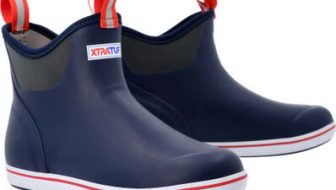
Per mountain lore, Peter Aschauer got the idea to create an inflatable flotation system for avalanche safety after hearing about a German forest ranger in the 1970s who survived an avalanche thanks to an elk affixed to his backpack. The mechanics were simple: the laws of fluid dynamics dictate that, when a medium is in motion, larger objects float to the surface…and man plus elk equals large object.
Aschauer conveyed a slightly more believable tale in 2017 interview for ISPO.com, the website of the international outdoor-industry trade show, where he relayed his interest in acquiring the patent for the airbag in 1980. “I myself witnessed an avalanche while heliskiing in Canada, which could have gone very badly,” he explained. “From that point on, I was sensitized to the topic.”
However his motivation played out, Aschauer began to develop a more reasonable way to stay above the snow and debuted his first iteration of a balloon pack in 1985. To operate, one simply pulled a cable that punctured a compressed air cartridge, which then inflated a backpack-mounted airbag.
The original company, dubbed ABS Peter Aschauer GmbH, continued to evolve its technology and debuted a twin-bag system in 1996 to replace the initial, single, rearward balloon. That model would become a staple for the company, as would a pyrotechnic-pneumatic activation unit. In 1998, Deuter took over pack production for ABS, followed by Dynafit in 2002. ABS saw its first rival avalanche airbag from Snowpulse, which Mammut purchased in 2011. Airbag technology made another leap in 2014, when Black Diamond released its JetForce, a battery-powered unit that was inflated by a fan. Arc’teryx soon followed suit with an electronic airbag that forewent compressed air, as did Alpride, which employs a super capacitor to power its airbag-inflating fan.
Today, avalanche airbags are so commonly used that they’re often mentioned in the same breath as the avalanche-safety-gear trifecta—beacon, shovel, probe. That’s because they’re proven, in study after study, to improve survival rates in avalanche accidents. “If a medical treatment got results like this, it would be flying off the shelves like hotcakes,” Pascal Haegeli, an assistant professor at Simon Fraser University in British Columbia, said at the 2015 Northwest Avalanche Center Snow and Avalanche Workshop. While it may never be confirmed whether an elk inspired the original airbag, the technology has certainly seen a stone-age-to-space-age evolution.









Related posts: